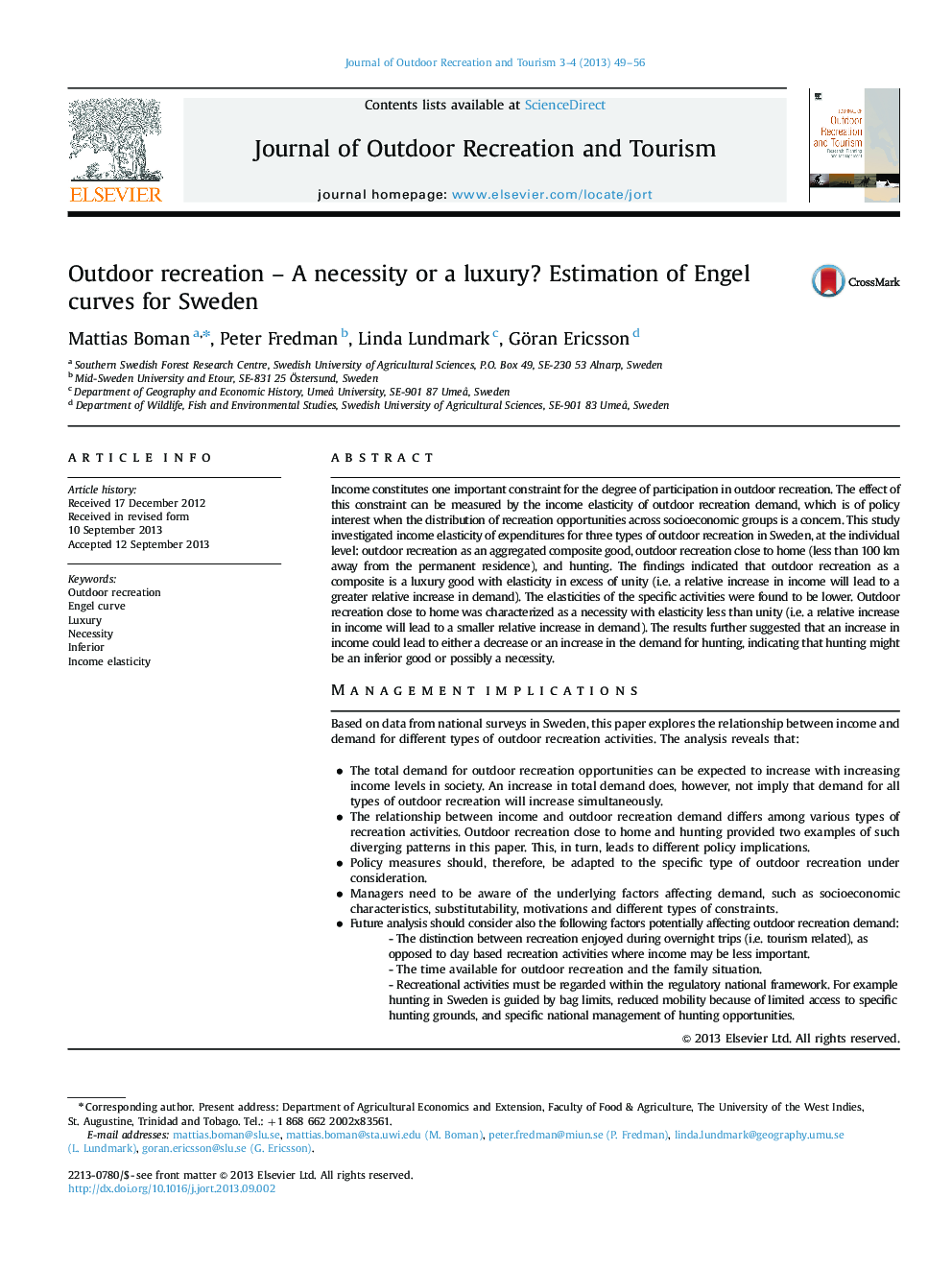| کد مقاله | کد نشریه | سال انتشار | مقاله انگلیسی | نسخه تمام متن |
|---|---|---|---|---|
| 92420 | 159956 | 2013 | 8 صفحه PDF | دانلود رایگان |

Income constitutes one important constraint for the degree of participation in outdoor recreation. The effect of this constraint can be measured by the income elasticity of outdoor recreation demand, which is of policy interest when the distribution of recreation opportunities across socioeconomic groups is a concern. This study investigated income elasticity of expenditures for three types of outdoor recreation in Sweden, at the individual level: outdoor recreation as an aggregated composite good, outdoor recreation close to home (less than 100 km away from the permanent residence), and hunting. The findings indicated that outdoor recreation as a composite is a luxury good with elasticity in excess of unity (i.e. a relative increase in income will lead to a greater relative increase in demand). The elasticities of the specific activities were found to be lower. Outdoor recreation close to home was characterized as a necessity with elasticity less than unity (i.e. a relative increase in income will lead to a smaller relative increase in demand). The results further suggested that an increase in income could lead to either a decrease or an increase in the demand for hunting, indicating that hunting might be an inferior good or possibly a necessity.Management implicationsBased on data from national surveys in Sweden, this paper explores the relationship between income and demand for different types of outdoor recreation activities. The analysis reveals that:
• The total demand for outdoor recreation opportunities can be expected to increase with increasing income levels in society. An increase in total demand does, however, not imply that demand for all types of outdoor recreation will increase simultaneously.
• The relationship between income and outdoor recreation demand differs among various types of recreation activities. Outdoor recreation close to home and hunting provided two examples of such diverging patterns in this paper. This, in turn, leads to different policy implications.
• Policy measures should, therefore, be adapted to the specific type of outdoor recreation under consideration.
• Managers need to be aware of the underlying factors affecting demand, such as socioeconomic characteristics, substitutability, motivations and different types of constraints.
• Future analysis should consider also the following factors potentially affecting outdoor recreation demand:- The distinction between recreation enjoyed during overnight trips (i.e. tourism related), as opposed to day based recreation activities where income may be less important.- The time available for outdoor recreation and the family situation.- Recreational activities must be regarded within the regulatory national framework. For example hunting in Sweden is guided by bag limits, reduced mobility because of limited access to specific hunting grounds, and specific national management of hunting opportunities.
Journal: Journal of Outdoor Recreation and Tourism - Volumes 3–4, December 2013, Pages 49–56